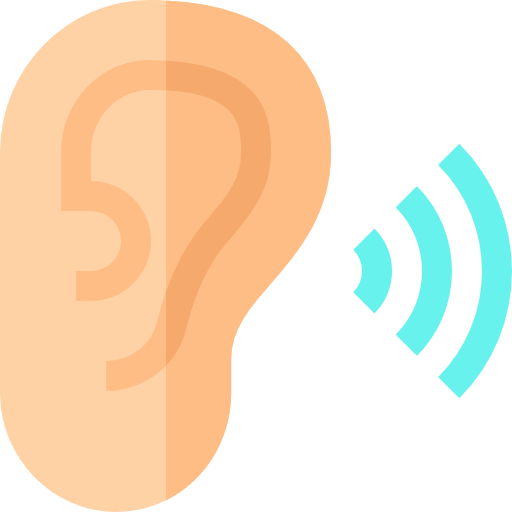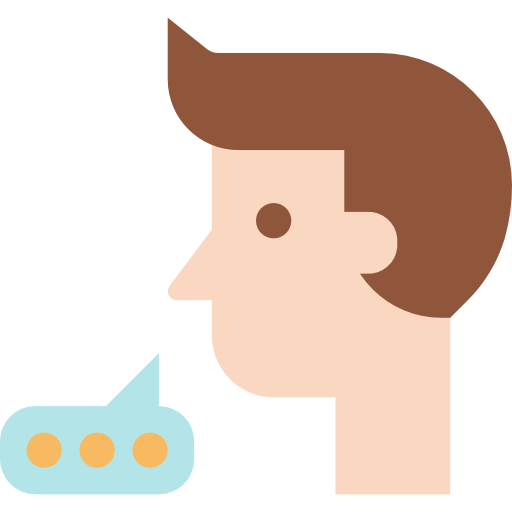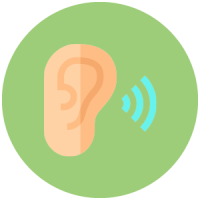-
 English & You
English & YouKids Courses
Little bilingual brains
It is never too early to expose a child to a second (or third) language. Children have an invaluable advantage of learning their first, second or third language just as naturally as they learn to walk.
We know that :Young kids can learn a second language as easily as they learn to walk and learn their primary language*.
Between the ages of 0-3 the brain is in its most flexible stage to learn a second language*.
Until the age of 8 kids can develop a near native pronunciation*.
The life benefits of bilingualism include a longer attention span, better ability to plan and solve problems, as well as to perform other mentally demanding tasks*.
*Tracy Trautner, Michigan State University Extension – January 28, 2019
Ellen Bialystok and Michelle Martin-Rhee 2004
– https://www.canr.msu.edu/news/advantages_of_a_bilingual_brain
Tax benefits
There is the possibility to have 50% of the charges of your English classes deducted from your annual taxes by providing the supporting documentation.
Method

1. Écouter
En savoir +
Le secret pour l’apprentissage de la première, seconde ou troisième langue chez le nourisson et l’enfant, c’est l’exposition régulière et systématique à la langue, le plus tôt possible. Les bébés intègrent leur langue maternelle simplement en l’entendant régulièrement. C’est une méthode qui marche à tous les coups.
Cette première étape se nomme la phase silencieuse, ou rien ne semble se passer. Les enfants ne parlent pas encore. C’est le silence. Mais en réalité, ils écoutent. Leurs petits cerveaux travaillent à plein régime pour comprendre le sens. Plus ils entendent la langue, plus ils l’intègrent.

2. Parler
En savoir +
Rapidement, l’enfant commence à dire des mots et à construire de courtes phrases. Nous créons une variété de situations et de contextes pour pratiquer au maximum et assimiler les nouvelles connaissances.
Pendant nos cours nous bavardons tout le temps. Nous lisons des histoires, chantons des chansons, récitons des comptines, et jouons des situations de la vie quotidienne pour familiariser leurs petites oreilles aux sons et intonations de l’anglais parlé.

3. Lire
En savoir +
La lecture vient une fois que l’enfant comprend les mots et peut les prononcer. Nous suivons les phases du développement de la lecture dans la langue maternelle de l’enfant, en le familiarisant aux sons et aux lettres, étape par étape.
Pendant les cours, nous commençons par de courts mots et phrases, puis découvrons le monde des histoires.

4. Écrire
En savoir +
Quand l’enfant maîtrise les trois premières compétences, nous pouvons alors nous concentrer sur l’écriture. L’enfant se familiarise avec les sons et les lettres écrites par petites étapes, en suivant le développement de l’écriture dans sa langue maternelle.
Tracer, recopier et d’autres tâches écrites ludiques sont intégrées dans les leçons pour développer la compétence écrite.

1. Listen
- Learn more
The secret for babies and kids learning their first, second or third language is early, regular and systematic exposure to the language.
Babies internalize their mother tongue just by hearing it regularly. It’s a fool-proof method that never fails. This first phase is called silent phase, where nothing seems to be happening. Children are not really talking yet. It seems like nothing is going on. Silence.
But in reality, so many things are happening. They’re listening. Their little brains are working full speed while picking up on meanings. The more they hear the language the more integrated it becomes.

2. Speak
- Learn more
Soon the child starts saying words and putting together short phrases and sentences. We create a variety of situations and contexts that promote the most possible practice to assimilate the new knowledge.
In our classes we chit-chat all the time. We read stories, sing songs, chant and act out everyday situations to familiarize their little ears to the sound and intonation of the spoken English language.

3. Read
- Learn more
Once the child understands the words and can speak them, reading comes next. We follow the developmental stages of learning to read in the child’s first language, familiarizing them with the sounds and letters step-by step.
In classes, we start with short words and sentences, then venture into the world of stories.

4. Write
- Learn more
After the child has mastered all three supporting skills, we can focus on writing. We become familiar with sounds and written letters in small steps, following the developmental stages of the child in their first language.
Tracing, copying, and other fun writing tasks are incorporated in the class to develop the fourth skill of writing.
Workshops
The methodology of the workshops are directly based on the child’s age and level of maturity which determines the type and length of activities in classes.
The activities are short and varied, alternating between dynamic activities and calmer circle time, during which we listen to stories, learn new words, chants and songs.
“First steps ”
Workshop for babies accompanied by their moms or dads to become little bilinguals through having a lots of fun.
Student age : 6 months to 3 yearsNumber of lessons : 30
Length of lesson : 45 mins
Vocabulary learnt : 300 – 350 words
Format : small group classes
“ Adventures in English”
Workshop for children for a total immersion into the English language universe through stories, songs and games to learn the language in the most effective and natural way.
Student age : 3 to 5 yearsNumber of lessons : 30
Length of lesson : 45 mins
Vocabulary learnt : 350 – 400 words
Format : small group classes
Your testimonials
 Gea Wortelboer2023-11-06I highly recommend Ashley as an English teacher for both children and adults. She is an exceptionally kind and approachable instructor who possesses a wonderful talent for teaching. Ashley's precision and patience in her teaching methods are truly commendable. Ashley has a unique ability to make learning English an enjoyable and encouraging experience. Her lessons are not only effective but also filled with positivity, creating a warm and inviting atmosphere for students. She has a knack for helping her students gain the confidence to speak English fluently and comfortably. If you're looking for an English teacher who is not only knowledgeable and skilled but also a pleasure to work with, Ashley is the perfect choice. Her dedication to her students and her passion for teaching are truly inspiring, and I have no doubt that she will be a great asset to anyone seeking to improve their English language skills. I wholeheartedly endorse Ashley as an English teacher and believe that anyone who has the opportunity to learn from her will be enriched by the experience. Gea Wortelboer
Gea Wortelboer2023-11-06I highly recommend Ashley as an English teacher for both children and adults. She is an exceptionally kind and approachable instructor who possesses a wonderful talent for teaching. Ashley's precision and patience in her teaching methods are truly commendable. Ashley has a unique ability to make learning English an enjoyable and encouraging experience. Her lessons are not only effective but also filled with positivity, creating a warm and inviting atmosphere for students. She has a knack for helping her students gain the confidence to speak English fluently and comfortably. If you're looking for an English teacher who is not only knowledgeable and skilled but also a pleasure to work with, Ashley is the perfect choice. Her dedication to her students and her passion for teaching are truly inspiring, and I have no doubt that she will be a great asset to anyone seeking to improve their English language skills. I wholeheartedly endorse Ashley as an English teacher and believe that anyone who has the opportunity to learn from her will be enriched by the experience. Gea Wortelboer Alexis Gillardeau2023-10-20Je recommande vivement. Cours intéressants et personnalisés. Professeur disponible et à l'écoute, j'ai beaucoup progressé grâce à ses cours, je recommande sans hésiter.
Alexis Gillardeau2023-10-20Je recommande vivement. Cours intéressants et personnalisés. Professeur disponible et à l'écoute, j'ai beaucoup progressé grâce à ses cours, je recommande sans hésiter. isabelle boudon2023-10-11Je recommande vivement Ashley pour l'apprentissage de l'anglais. Grâce à sa pédagogie à la fois ludique et interactive, Ashley a réussi à débloquer ma fille à l'oral. Pauline ( 14 ans) est aujourd'hui beaucoup plus à l'aise et est toujours revenue enchantée de ses cours. Ashley accompagne également mon fils dans la préparation de ses examens avec de très bons résultats. Merci !
isabelle boudon2023-10-11Je recommande vivement Ashley pour l'apprentissage de l'anglais. Grâce à sa pédagogie à la fois ludique et interactive, Ashley a réussi à débloquer ma fille à l'oral. Pauline ( 14 ans) est aujourd'hui beaucoup plus à l'aise et est toujours revenue enchantée de ses cours. Ashley accompagne également mon fils dans la préparation de ses examens avec de très bons résultats. Merci ! Anne CHARRIER2023-10-10J'aime beaucoup travailler avec Ashley. Elle est souriante et dynamique, encourageante et d'une grande aide. De plus, elle s'intéresse à de nombreux sujets.
Anne CHARRIER2023-10-10J'aime beaucoup travailler avec Ashley. Elle est souriante et dynamique, encourageante et d'une grande aide. De plus, elle s'intéresse à de nombreux sujets. Marie Dudognon2023-10-10Ashley intervient dans notre crèche pour des séances d'anglais auprès des enfants. Ils adorent ce moment de chansons, jeux et histoires tout en anglais. Ashley est extrêmement douce et bienveillante avec les tout-petits.
Marie Dudognon2023-10-10Ashley intervient dans notre crèche pour des séances d'anglais auprès des enfants. Ils adorent ce moment de chansons, jeux et histoires tout en anglais. Ashley est extrêmement douce et bienveillante avec les tout-petits. Petra Balázs2023-10-09I am so grateful for the way you create a positive atmosphere in the lessons. Also, your commitment to teaching is awe-inspiring and your lovely personality shines through in your teaching. Thank you!
Petra Balázs2023-10-09I am so grateful for the way you create a positive atmosphere in the lessons. Also, your commitment to teaching is awe-inspiring and your lovely personality shines through in your teaching. Thank you! Hixie2023-10-09"J'aime bien les cours d'anglais car on fait des jeux et il y a des chansons aussi. En plus, Ashley est très gentille." Isaac (8ans)
Hixie2023-10-09"J'aime bien les cours d'anglais car on fait des jeux et il y a des chansons aussi. En plus, Ashley est très gentille." Isaac (8ans) Corrius Julia2023-10-06Ashley m'a aidé a preparer le TOEFL parfaitement, ce qui m'a permis de valider le niveau que je voulais. Ashley s'est complètement adapté a mes besoins pour me faire progresser au mieux en toute confiance et bienveillance !
Corrius Julia2023-10-06Ashley m'a aidé a preparer le TOEFL parfaitement, ce qui m'a permis de valider le niveau que je voulais. Ashley s'est complètement adapté a mes besoins pour me faire progresser au mieux en toute confiance et bienveillance ! alice fougere2023-10-05Je recommande fortement les cours d'Ashley car après avoir pratiqué l'anglais lors de voyage mais aussi professionnellement, je souhaitais pouvoir maintenir mon niveau afin de ne pas perdre ce que j'avais acquis et échanger avec Ashley m'a beaucoup aidé. Merci beaucoup ;)
alice fougere2023-10-05Je recommande fortement les cours d'Ashley car après avoir pratiqué l'anglais lors de voyage mais aussi professionnellement, je souhaitais pouvoir maintenir mon niveau afin de ne pas perdre ce que j'avais acquis et échanger avec Ashley m'a beaucoup aidé. Merci beaucoup ;) Ekaterina Angela2023-10-02Nous avons contacté Ashley pour aider notre fille à vaincre son blocage de s'exprimer en anglais lors des cours au collège. Très rapidement, Ashley a mis notre fille à l'aise et lui a donné le goût de l'apprentissage. Depuis un an de cours avec Ashley, les progrès de notre fille sont fulgurants, elle parle couramment anglais et non seulement ses notes en anglais sont devenues excellentes, mais aussi elle s'intéresse beaucoup à la langue en regardant des séries en anglais et en discutant en anglais avec ses camarades anglophones. Je tiens à remercier Ashley pour sa pédagogie et sa gentillesse, c'est une excellente prof et nous avons eu beaucoup de chance de tomber sur elle.Évaluation Google : 5.0 sur 5, Basée sur 35 avis
Ekaterina Angela2023-10-02Nous avons contacté Ashley pour aider notre fille à vaincre son blocage de s'exprimer en anglais lors des cours au collège. Très rapidement, Ashley a mis notre fille à l'aise et lui a donné le goût de l'apprentissage. Depuis un an de cours avec Ashley, les progrès de notre fille sont fulgurants, elle parle couramment anglais et non seulement ses notes en anglais sont devenues excellentes, mais aussi elle s'intéresse beaucoup à la langue en regardant des séries en anglais et en discutant en anglais avec ses camarades anglophones. Je tiens à remercier Ashley pour sa pédagogie et sa gentillesse, c'est une excellente prof et nous avons eu beaucoup de chance de tomber sur elle.Évaluation Google : 5.0 sur 5, Basée sur 35 avis